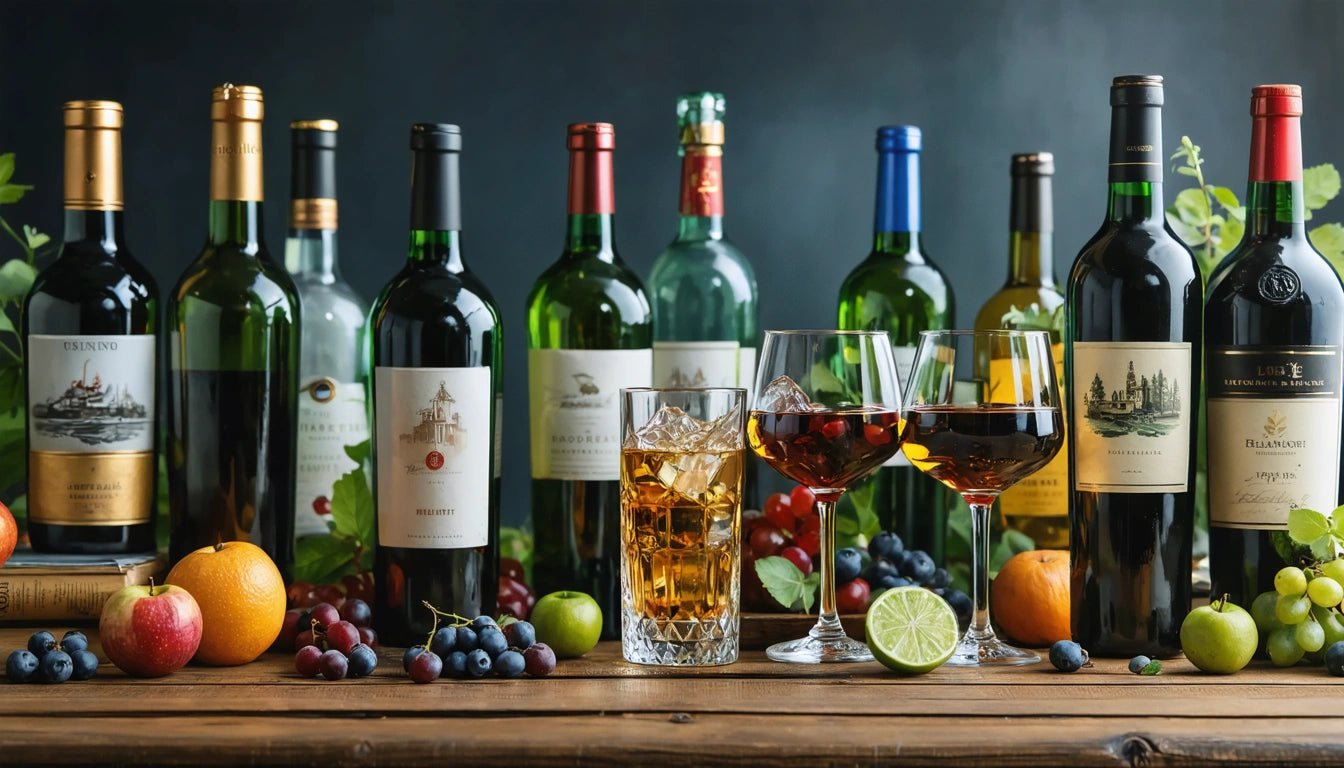Table of Contents
- Standard Liquor Bottle Sizes and Ounce Measurements
- Case Measurements: How Many Bottles in a Case of Liquor
- Wine Bottle Measurements: Understanding Liters and Ounces
- Conversion Guide: Milliliters to Ounces for Liquor
- Practical Applications: Why Measurements Matter
- Industry Standards and Future Measurement Trends
Understanding Liquor Measurements: Bottles, Cases, and Ounces Explained
Whether you're stocking a bar, planning an event, or simply curious about alcohol measurements, understanding liquor quantities is essential for accurate purchasing and inventory management. From determining how many ounces are in a bottle of liquor to knowing exactly how many bottles make up a standard case, these measurements form the foundation of the beverage industry.
Standard Liquor Bottle Sizes and Ounce Measurements
The most common question in the spirits industry revolves around capacity: how many ounces in a liquor bottle? Standard liquor bottles in the United States follow specific size conventions:
- Miniature (Mini/Nip): 50ml (1.7 oz)
- Half Pint: 200ml (6.8 oz)
- Pint: 375ml (12.7 oz)
- Standard Bottle (Fifth): 750ml (25.4 oz)
- Liter: 1L (33.8 oz)
- Handle (Half Gallon): 1.75L (59.2 oz)
The standard 750ml bottle, often called a "fifth" (historically one-fifth of a gallon), contains approximately 25.4 ounces of liquor. This measurement is crucial for bartenders calculating drink recipes and distributors managing inventory. For more detailed information on specific spirits, you can explore guides on vodka bottle sizes and whiskey measurements.
Case Measurements: How Many Bottles in a Case of Liquor
When purchasing liquor in bulk, cases are the standard unit. But how many liquor bottles in a case? The answer varies by bottle size:
- Standard 750ml Bottles: 12 bottles per case
- 1L Bottles: 12 bottles per case
- 1.75L Handles: 6 bottles per case
- Miniatures (50ml): Usually 60 bottles per case
- Pints (375ml): 24 bottles per case
A standard case of liquor typically contains 12 bottles of the 750ml size, totaling approximately 9 liters or 304.8 ounces of product. This standardization helps with shipping logistics, inventory management, and price calculations throughout the supply chain.
Highlight: A standard case of twelve 750ml liquor bottles contains approximately 304.8 ounces (9 liters) of product, making it the industry benchmark for wholesale purchasing.
Wine Bottle Measurements: Understanding Liters and Ounces
Wine bottles follow a slightly different measurement standard than spirits. When considering how many liters in a wine bottle, the measurements typically are:
- Standard Wine Bottle: 750ml (0.75 liters or 25.4 oz)
- Half Bottle: 375ml (0.375 liters or 12.7 oz)
- Magnum: 1.5L (1.5 liters or 50.8 oz)
- Double Magnum: 3L (3 liters or 101.6 oz)
Wine cases typically contain 12 standard bottles, similar to spirits, though specialty sizes like magnums may be packaged in smaller case quantities. For a comprehensive overview of various alcohol container sizes, you might find this guide to alcohol bottle sizes helpful.
Conversion Guide: Milliliters to Ounces for Liquor
Understanding how many ounces in a liter of liquor is essential for accurate pouring and inventory. Here's a simple conversion guide:
- 1 liter = 33.8 fluid ounces
- 750ml = 25.4 fluid ounces
- 500ml = 16.9 fluid ounces
- 375ml = 12.7 fluid ounces
- 200ml = 6.8 fluid ounces
- 50ml = 1.7 fluid ounces
For those working in environments where precise measurements matter, such as craft beverage production or specialized packaging facilities like those offering premium rolling supplies for the cannabis industry, these conversions ensure consistency across products and help maintain quality standards.
For more detailed conversion information, this milliliters to ounces conversion guide provides additional context.
Practical Applications: Why Measurements Matter
Understanding how many oz in a bottle of liquor has practical applications beyond basic knowledge:
- Inventory Management: Tracking inventory by ounces helps bars calculate pour costs accurately
- Recipe Standardization: Consistent measurements ensure drink quality
- Cost Analysis: Price per ounce calculations help determine value
- Storage Planning: Case dimensions affect warehouse and shelf space requirements
- Regulatory Compliance: Standard measurements facilitate excise tax calculations
For establishments serving beer alongside spirits, understanding beer bottle measurements completes the beverage knowledge base.
Industry Standards and Future Measurement Trends
While traditional measurements remain standard, the beverage industry continues to evolve. Ready-to-drink cocktails, single-serve options, and sustainable packaging are influencing how liquor is measured and sold. Some emerging trends include:
- Smaller format bottles for premium spirits
- Eco-friendly packaging with alternative volume measurements
- Digital measurement tools for inventory management
- Standardized international measurements to simplify global trade
Understanding these fundamentals helps industry professionals make informed decisions about purchasing, stocking, and serving alcoholic beverages. Whether you're managing a bar, planning an event, or simply expanding your knowledge, these measurement standards provide the foundation for successful beverage operations.
For specialized measurements like handles or champagne servings, additional resources on handle measurements and champagne and tequila measurements can provide further insights.



















